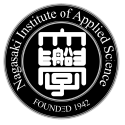Professor Yamabe was interviewed from “化学 Chemistry“, entitled “Lithium ion rechargeable batteries tracing the origins of research and development”
Professor Yamabe was interviewed from “化学 ,Chemistry (Kagaku-Dojin Publishing Company, Inc.) ”on the early development days of lithium ion battery which is nowadays regarded as a candidate for Nobel prize . He has been involved from the start in fundamental research into lithium ion capacitors and lithium ion rechargeable batteries. Since he is also familiar with the key figures in the development of rechargeable batteries, Professor Yamabe was able to fill us in on some of the ‘unrevealed’ facts.
In this interview Professor Yamabe evaluated his own research as follows, “there were two main trends in the research and development of negative-electrode materials for lithium ion rechargeable batteries. One was the approach from the field of electrochemistry centering on graphite intercalation compounds, and the other was the approach from the field of new carbon semiconductive materials that had originated in polyacetylene. In the move toward practical application, I would say, in conclusion, it was the latter that played the leading role.” , and then “Looking at the major streams in technology development you could perhaps say that the negative-electrode of today’s lithium ion rechargeable battery has its origins in our PAS(PolyAcenic Semiconductive material ) - derived lithium ion capacitor technology.”
Profile

Documents cited in “Chemistry”
- Gosei Kinzoku (synthetic metals) (Chemistry Special Issue 87, edited by Hideki Shirakawa and Tokio Yamabe, Kagaku-Dojin Publishing Company, Inc., published in 1980)
- P. J. Nigrey, D. Maclnnes Jr., D. P. Nairns, A. G. MacDiarmid, A. J. Heeger. Lightweight Rechargeable Storage Batteries Using Polyacetylene (CH)x as the Cathode-Active Material. J. Electrochem. Soc., 128, 1651 (1981).
- T. Yamabe, K. Tanaka, K. Ohzeki, S. Yata. Electronic Structure of Polyacenacene. A One-Dimensional Graphite. Solid State Commun., 44, 823 (1982).
- In 1977, M. Armand et al. published the concept of a storage battery combining a graphite intercalational compound with metallic lithium foil, but no suitable electrolyte solution was found. M. Armand, P. Touzain, Mater. Sci. Eng., 31, 319 (1977)
- P. Novák, K. Müller, K. S. V. Santhanam, O. Haas. Electrochemically Active Polymers for Rechargeable Batteries. Chem. Rev., 97, 207 (1997).







